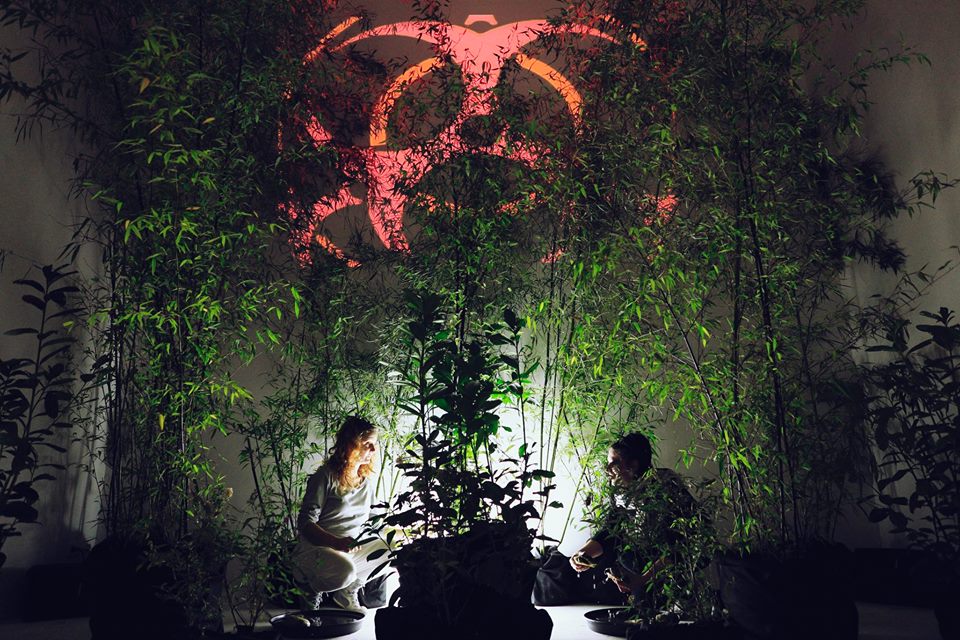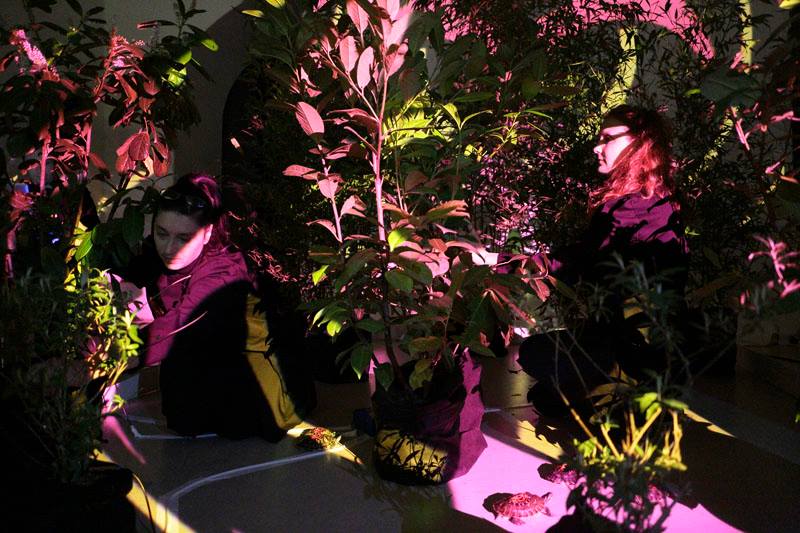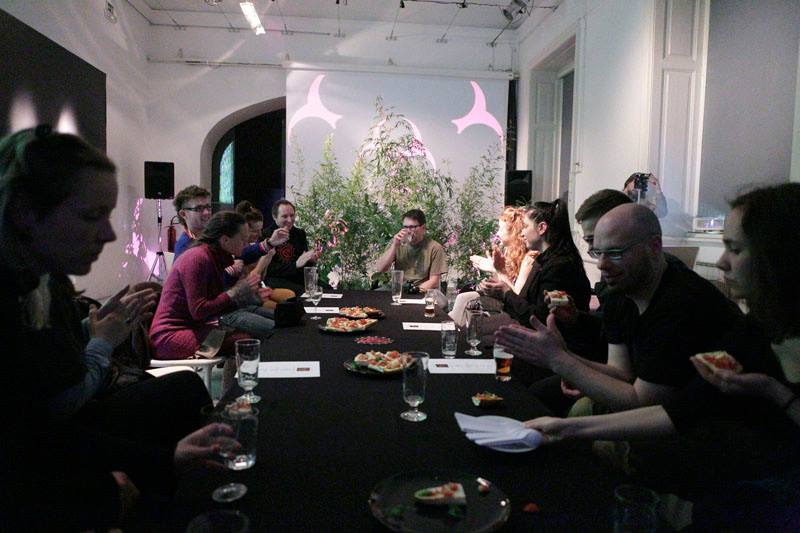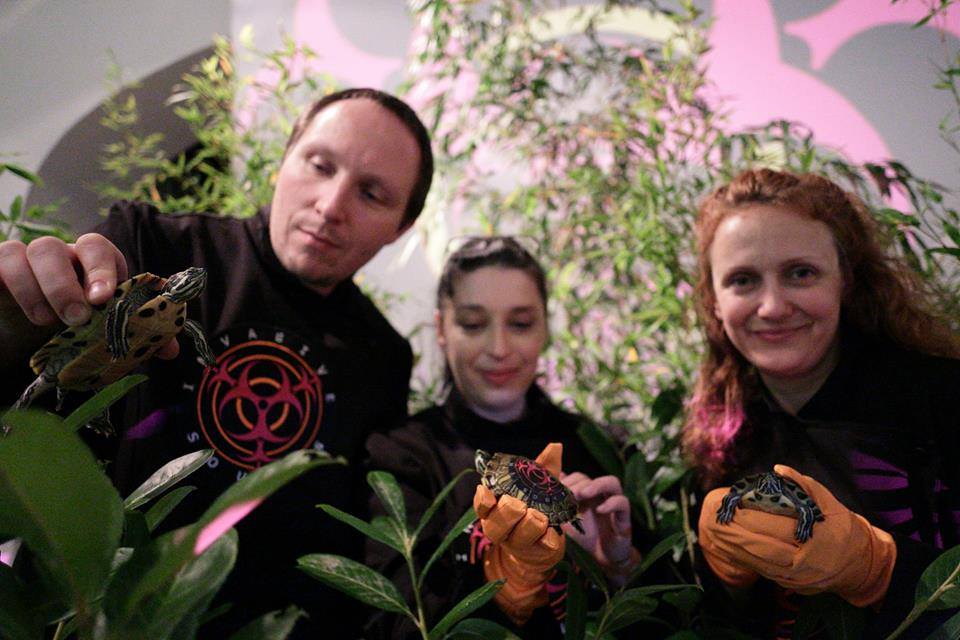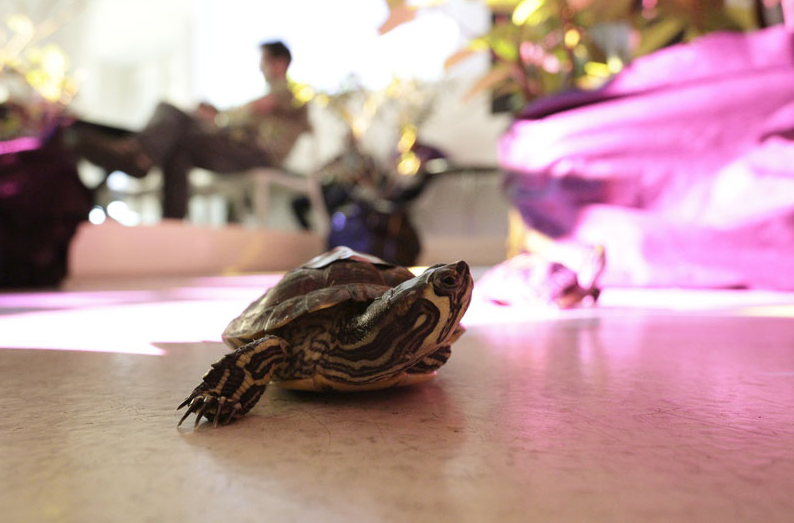Invasive sounds
co-authors: Maja Smrekar and Robertina Šebjanič
[slovenski tekst kmalu – stran je v nastajanju ⇊⇊]
Sound Invasions, Kiblix festival, Kibla Portal, photo by Janez Klenovšek, Maribor 2014
Migration of invasive species, harmful subgroup of non-native species, is leading to a new diseases, adverse changes in ecosystem services, impoverishment of biodiversity, extinction of indigenous species and devastation of fauna and flora, which poses a threat for the highest developed predators and especially humans!
Discourses on the topic of invasive species takes place in a range that varies between pure science objectivity and extreme emotional xenophobia. Perhaps such a natural phenomenon, almost entirely initiated by the Homo sapiens species can also be understood as an “accidental experiment” which enables new possibilities of experiencing operation systems in the nature.
From the perspective of social constructivism of normative theorems relating to Nature, human culture is never completely innocent, we can’t say anything what does not originate from human conceptual apparatus, which is interviewed with a human needs and desires – in short, when talk about nature we are always talking about (human)culture. [Proctor, 2001]
Invasive sounds
Plant-sound performance, Bio-lecture, Invasive dinner: If you can ́t beat them – EAT THEM!
I. Plant-sound performance (Robertina Šebjanič, Maja Smrekar, Miha Tomšič)
Using a DIY system that interprets some levels of the plants’ existence, we will present a live creation of sound and image, generated by locally growing but non-native invasive plant species. Electromagnetic current, connected to the plants and the software (Pure Data, SuperCollider and Resolume), will translate data into sound, transforming the invasive garden into a noisy electrical circuit of synthetic samples of organic liveness, the essence of which, both in nature and technology, is based on variants inside the origin of constantly equal repetition.
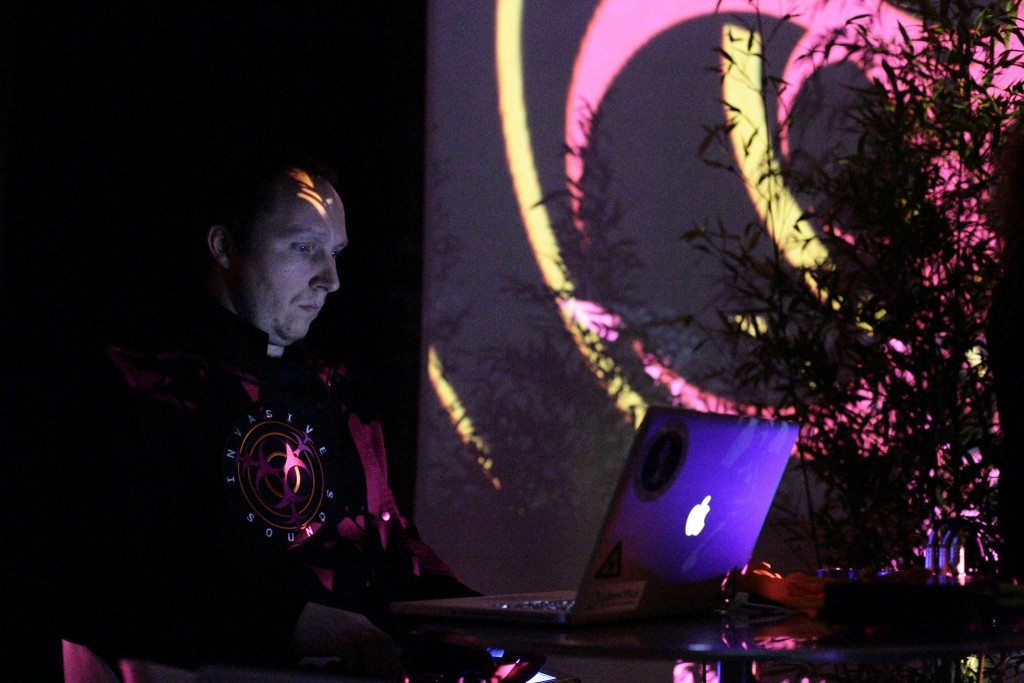 Plant-sound performance Invasive sounds, Kibla, photo by Janez Klenovšek, Maribor 2014
Plant-sound performance Invasive sounds, Kibla, photo by Janez Klenovšek, Maribor 2014
II. Bio-lecture (Nejc Jogan, PhD)
The performance was followed by a lecture on the global and local aspects of hybridizations, i.e. the changing mechanisms of natural selection, which often induce changes of indigenous plants inside ecosystems, thereby influencing the potential of their ecological niches, which in turn causes the outset of the sixth great species extinction on Earth.
Invasive dinner, Kibla, photo by Janez Klenovšek, Maribor 2014
III. Invasive dinner: If you can ́t beat them – EAT THEM!
Dinner was served in the form of some of the most wide-spread non-native invasive plant species from the Maribor Pohorje mountain ridge: policeman’s helmet (Impatiens glandulifera), Japanese knotweed (Fallopia japonica), Canadian goldenrod (Solidago canadensis), and some other invasive species representatives from these parts. While you discuss the various local and global aspects of non-native invasive plant species with the project team, you will have a chance to experience the invasive phenomenon also on the gourmet level.
Miha Tomšič, Robertina Šebjanič and Maja Smrekar, Kibla, photo by Janez Klenovšek, Maribor 2014
_________________________________________________________________________________
co-authors: Maja Smrekar and Robertina Šebjanič
professional associate and sound co-design: Miha Tomšič
logo design: Andrej Strehovec
production: Kibla, 2014
The project is supported by the Ministry of Culture of the Republic of Slovenia and the Municipality of Maribor.
